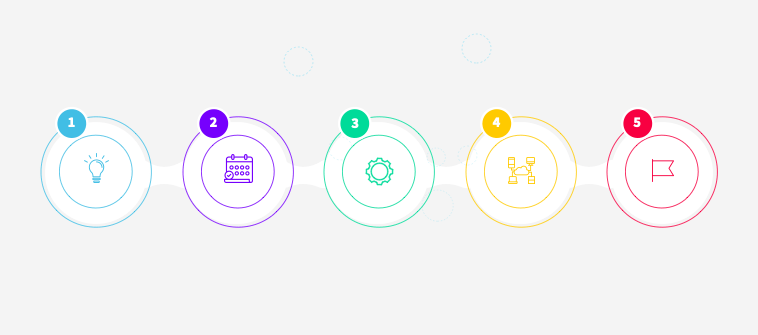Have you ever been in the middle of a project when suddenly, the goalposts shift?
Maybe a new regulation requires adjustments, or a stakeholder proposes a critical feature addition. This isn’t anything unnatural, but for people managing multiple projects, this can be a nightmare if not properly navigated.
That is why, a lot of times, I emphasize the importance of understanding what change management in project management is.
It’s not something that you get to hear every day unless you are closely associated with people managing projects. Regardless, if you want to know more about how to manage such project alterations through a strategic framework, this blog is for you.
What Is Change Management in Project Management?
I’ll give an analogical example to help you understand it better. Here you go –
Imagine leading a cross-functional team tasked with developing a new software product. The initial project roadmap is your strategic plan outlining the features, functionalities, and deadlines.
Change management, in this analogy, is similar to encountering unforeseen market demands or technological advancements during development. It equips you with what’s needed to adapt your approach – so that the product remains aligned with the revised vision while minimizing disruptions to the development lifecycle.
Makes sense? Now, here’s a proper definition of change management, according to TechTarget –
“Change management is a systematic approach to dealing with the transition or transformation of an organization’s goals, processes or technologies.”
The main purpose is to devise strategies to help everyone in the team execute the change, control it, and adapt to it.
A planned transition helps you –
- Adapt to new changes proactively
- Optimize workflows to sustain rescheduling and adjustments
- Control costs incurred due to new project development
- Mitigate risks owing to new project requirements
Change Management vs. Project Management: Where’s the Difference?
Project management and change management are two sides of the same coin – both crucial for successful project execution.
Project management establishes a comprehensive plan from the outset, outlining the scope, timeline, and resource allocation. Change management, on the other hand, acknowledges that unforeseen circumstances may demand adjustments to the plan.
Key differences in a nutshell:
| Feature | Project Management | Change Management |
| Focus | Delivering the project plan | Adapting to modifications |
| Change Tolerance | Low | High |
| Key Skills | Planning, scheduling, resource allocation | Communication, negotiation, stakeholder management |
Project managers leverage change management to course-correct when necessary, while its initiatives benefit from the structure and planning emphasized in project management.
? Quick Trivia: Change control (CC) in project management is NOT the same as change management (CM). So, where’s the difference?
- While CC is the decision about making a change, CM is what happens afterward.
- While CC evaluates a change request in project management, CM ensures the people concerned are prepared for it, have accepted it, and know how to adapt.
How to Apply a Change Management Plan in Project Management?
Guiding a project through modifications requires a structured approach. Here’s a breakdown of the essential steps involved in applying change management effectively –
#1 Prepare for Change: Building Awareness & Understanding
Preparation is the foundation of change management in project management.
Here, you identify the scope and impact of the proposed changes on the project. This preparation phase is crucial for anticipating potential resistance and setting realistic expectations.
It includes conducting impact analyses, considering risk assessments, and ensuring there is clear communication about the reasons for change. In my experience, survey tools can be a good choice here to conduct surveys and interviews to gauge the organization’s pulse.
#2 Plan for Change: Charting the Course
Developing a strategy requires a multi-faceted approach. You can begin by defining clear, measurable objectives for the change initiative. Creating a roadmap that outlines the actions needed to achieve the change, assigning roles and responsibilities, and setting timelines for completion is a good starting point.
The plan should also include a communication strategy that keeps all stakeholders throughout the process. So, how do you take control of all these?
Well, based on what I learned from industry experts (project managers, team leaders, managers), they prefer getting a project management system.
Here are some reasons why that can make change management effortless –
- A clear dashboard: Drag and drop tasks, customize workflows, and work with the team from a single platform.
- Interactive project views: Is the project still on track after the changes? That’s what you can visualize using Gantt charts, Kanban boards, a calendar, or a list view.
- Automated alerts: Want the whole team to stay updated while also not wasting time sending emails to everyone every time a change is made? Automation will save your day.
- Team collaboration: No more jumping from one software to another because you can set up teams, tag using @mentions, share files, add task comments, and so on.
#3 Implement Change: Putting the Plan Into Action
With a solid plan in place, the focus shifts to putting the strategies into action.
This involves managing the details of the change, monitoring the progress, and addressing any issues as they arise. Start by communicating the change to all stakeholders providing them with the necessary information and training to adapt to new processes or systems.
Establish a support structure, such as a help desk, to assist employees during the transition. For training, my best suggestion would be getting an LMS software to help individuals make the transition.
Watch this video to learn how to create an online training course –
Finally, the implementation should be monitored closely using key performance indicators (KPIs) to measure progress and identify areas that need attention.
#4 Sustain Change: Embedding the Change Into the Project Culture
The final step is to ensure that the change is not only implemented but also maintained over time.
This could involve reinforcing the changes through ongoing support, training, and adjustments based on feedback. It’s crucial to embed the change into the organization’s culture to prevent reverting to old habits.
Collect feedback through surveys or forums to understand the change’s impact and make necessary adjustments as needed. Regularly review the change initiative’s outcomes against the original objectives to confirm its success.
Primary Objectives of Change Management in Project Management
Change management in projects serves a multitude of crucial purposes with a common aim, i.e., ensuring a smooth and successful adaptation to modifications within the project scope.
Let’s take you through a quick breakdown of the core objectives.
- Minimize Disruption: Unforeseen changes can throw a project off course. But, with a change management strategy, you can lessen the negative impact on the project’s workflow.
- Maintain Stakeholder Buy-In: Change management emphasizes clear and transparent communication throughout the process. Stakeholders are informed about the rationale behind the change, its potential implications, and how their input is valued.
- Mitigate Risks: A proactive change management strategy evaluates potential risks associated with the proposed change, allowing for the development of contingency plans to address unforeseen challenges.
- Enhance Team Effectiveness: You can equip teams with comprehensive training on new processes or technologies associated with the change. Open communication channels address concerns to adapt effectively to new circumstances.
- Ensure Long-Term Project Viability: Change management fosters a culture of adaptability within the project team. Teams develop the necessary skills and experience to handle future modifications with greater agility.
Benefits of Applying Change Management in Projects
When you integrate change management into your project or organizational frameworks, the benefits extend far beyond the immediate outcomes of specific initiatives. Some of them include –
- Increased Project Success Rates: Proactive change management minimizes disruptions and fosters smoother sailing toward project goals.
- Enhanced Team Morale & Efficiency: Communication and support empower teams to adapt, reducing friction and boosting efficiency.
- Improved Resource Allocation: Proactive adjustments ensure teams have the capacity to manage changes effectively.
- Reduced Rework: Clear plans minimize the need to redo work due to miscommunication or missed considerations.
- Enhanced Risk Management plan: Proactive assessment allows for contingency plans, minimizing the impact of change-induced challenges.
Suggested read: Project Risk Assessment: All You Need to Know About
Drive Change Management Effortlessly With ProProfs Project
Between the initiation and the closing stages of a project lifecycle, there can be a need for numerous changes. As a manager or a team leader, it is on you – how you implement change management in project management without disturbing the project’s balance.
And the only way to do that without sleepless nights is by embracing a project management software solution.
Tools like ProProfs Project consolidates project discussions, updates, and announcements in a central location. Such a tool also helps boost team collaboration among everyone involved, which I think is a must-have to swiftly adapt to changes and maintain project momentum.
Now, all these project management software features, you can find in almost all software solutions. But, what I also like is that the software has a freemium plan for new users to test it out. I’d definitely recommend you test a free version first, regardless of which software you choose!
FREE. All Features. FOREVER!
Try our Forever FREE account with all premium features!





